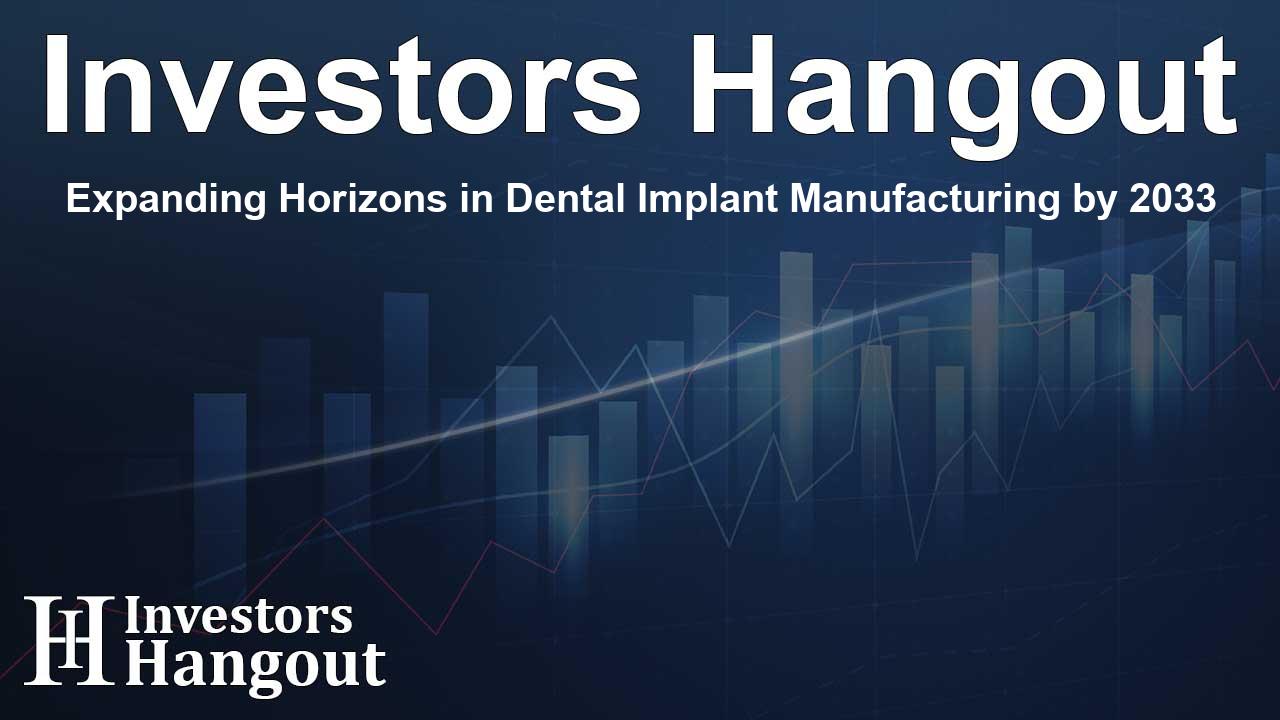Expanding Horizons in Dental Implant Manufacturing by 2033

Dental Implants and Prosthetics Contract Manufacturing Market
The dental implants and prosthetics contract manufacturing market is on the verge of remarkable growth, with projections indicating it will reach over US$ 3.23 billion by 2033. This growth is attributed to a compound annual growth rate (CAGR) of 8.5% from 2025 to 2033. Contract manufacturing has transformed operational strategies, allowing for advanced production without the extensive need for in-house resources.
Why Contract Manufacturing Matters
Contract manufacturing has allowed smaller dental clinics to access cutting-edge technology without the hefty investment in milling machines or 3D printers. This model has enabled clinics to focus on patient care rather than the complexities of production. For instance, establishing the necessary skills for CNC milling requires around 400 hours of training, a hurdle for many small laboratories.
Benefits of Collaboration
By partnering with specialized manufacturing firms, dental clinics can efficiently access advanced tools and techniques. These partnerships facilitate immediate access to implant frameworks and full-arch solutions, enabling dentists to provide superior care while ensuring product quality. The real-time feedback loop created by collaboration between designers and practicing dentists allows for the development of implant devices that integrate seamlessly with patient anatomies.
Key Industry Trends Shaping the Future
Emerging technologies are reshaping the landscape of dental implants and prosthetics. The trend towards robotic milling has gained traction for producing ultra-accurate materials, while bioceramic coatings are being utilized to enhance the longevity of implants. Additionally, smart workflow systems are emerging, linking intraoral scanning directly to manufacturing processes, ensuring precision and reducing timeframes.
Challenges in the Market
Despite the advancements, the sector faces several challenges, including synchronizing digital platforms for large-scale production and the complexities introduced by new alloys that require specialized manufacturing techniques. Keeping skilled technicians is critical as the field evolves and expectations rise.
Innovative Materials Driving Quality
Quality assurance is crucial in dental implant manufacturing. Companies like BEGO are processing thousands of titanium rods each month using advanced machining technologies, while manufacturers like Scheftner focus on high-performance alloys. Additionally, the introduction of Polyether Ether Ketone (PEEK) is emerging as a material for lightweight restorations, reshaping production methods.
Building Partnerships for Quality Outcomes
Major players in the industry recognize the value of partnerships with contract manufacturers. Companies like Straumann and Nobel Biocare are forming collaborations to leverage digital workflows and enhance production efficiency. This dynamic environment encourages the sharing of knowledge and adaptation of new techniques to meet increasing demands.
Quality Management in Manufacturing
Reliability and quality management are fundamental to maintaining competitive advantage. Manufacturers implement stringent controls at every production phase, utilizing coordinate measuring machines for precision and adhering to strict regulatory standards. Compliance with guidance from agencies ensures that implants meet safety and performance criteria.
Exploring the Clinical Benefits of Contracted Solutions
Not only do contract-manufactured products benefit clinics economically, but they also offer significant clinical advantages. Clinics report improved integration rates when using high-precision abutments, leading to better patient outcomes and satisfaction.
Future of Dental Manufacturing
The market for dental implants and prosthetics contract manufacturing is poised for substantial growth as the synergy of design and manufacturing evolves. The emphasis remains on delivering exceptional restorative treatments while maintaining cost efficiencies. The combination of new technologies, quality control, and expansive partnerships points toward a promising future for the dental industry.
Frequently Asked Questions
What is the projected size of the dental implants and prosthetics market by 2033?
The market is expected to exceed US$ 3.23 billion by 2033.
What role does contract manufacturing play in this industry?
Contract manufacturing allows dental clinics to access advanced production capabilities without heavy investments while maintaining quality.
What are some key trends influencing the market?
Trends include the adoption of robotic milling, bioceramic coatings, and smart workflow systems to improve precision and efficiency.
What challenges does the market face?
Challenges include synchronizing digital platforms and keeping up with new materials that require specialized knowledge and equipment.
What are the benefits of contract-manufactured dental products?
Enhanced integration rates, reduced costs, and access to high-quality manufacturing technologies lead to better patient experiences and outcomes.
About The Author
Contact Owen Jenkins privately here. Or send an email with ATTN: Owen Jenkins as the subject to contact@investorshangout.com.
About Investors Hangout
Investors Hangout is a leading online stock forum for financial discussion and learning, offering a wide range of free tools and resources. It draws in traders of all levels, who exchange market knowledge, investigate trading tactics, and keep an eye on industry developments in real time. Featuring financial articles, stock message boards, quotes, charts, company profiles, and live news updates. Through cooperative learning and a wealth of informational resources, it helps users from novices creating their first portfolios to experts honing their techniques. Join Investors Hangout today: https://investorshangout.com/
The content of this article is based on factual, publicly available information and does not represent legal, financial, or investment advice. Investors Hangout does not offer financial advice, and the author is not a licensed financial advisor. Consult a qualified advisor before making any financial or investment decisions based on this article. This article should not be considered advice to purchase, sell, or hold any securities or other investments. If any of the material provided here is inaccurate, please contact us for corrections.
